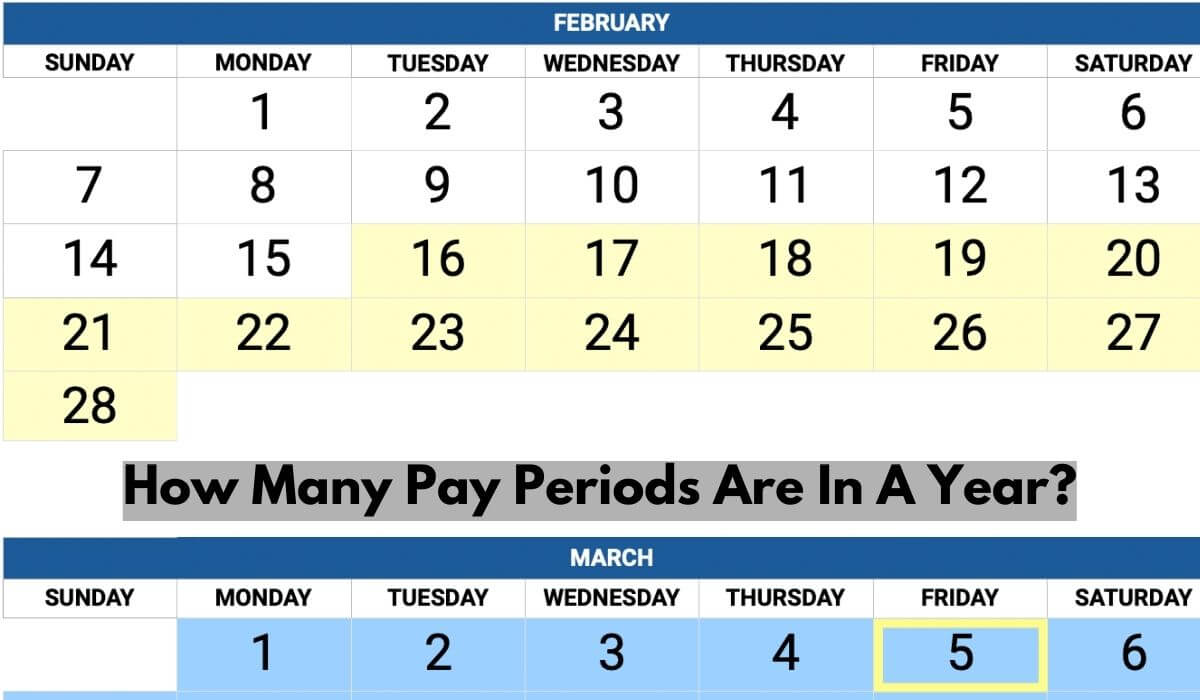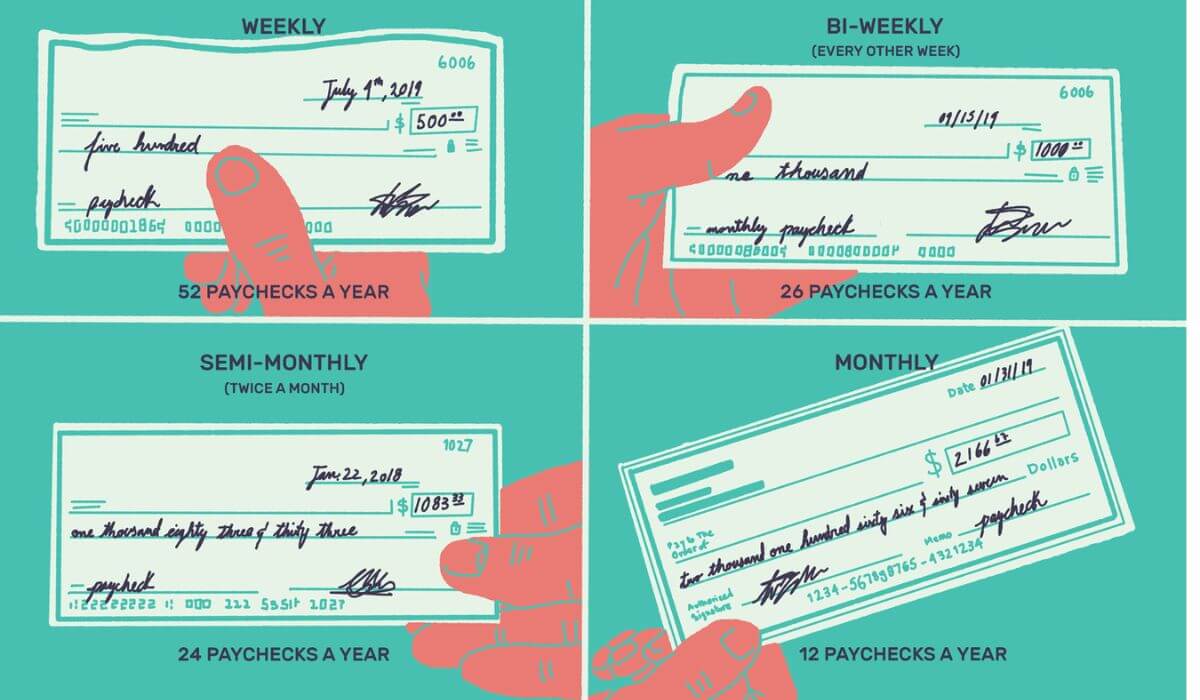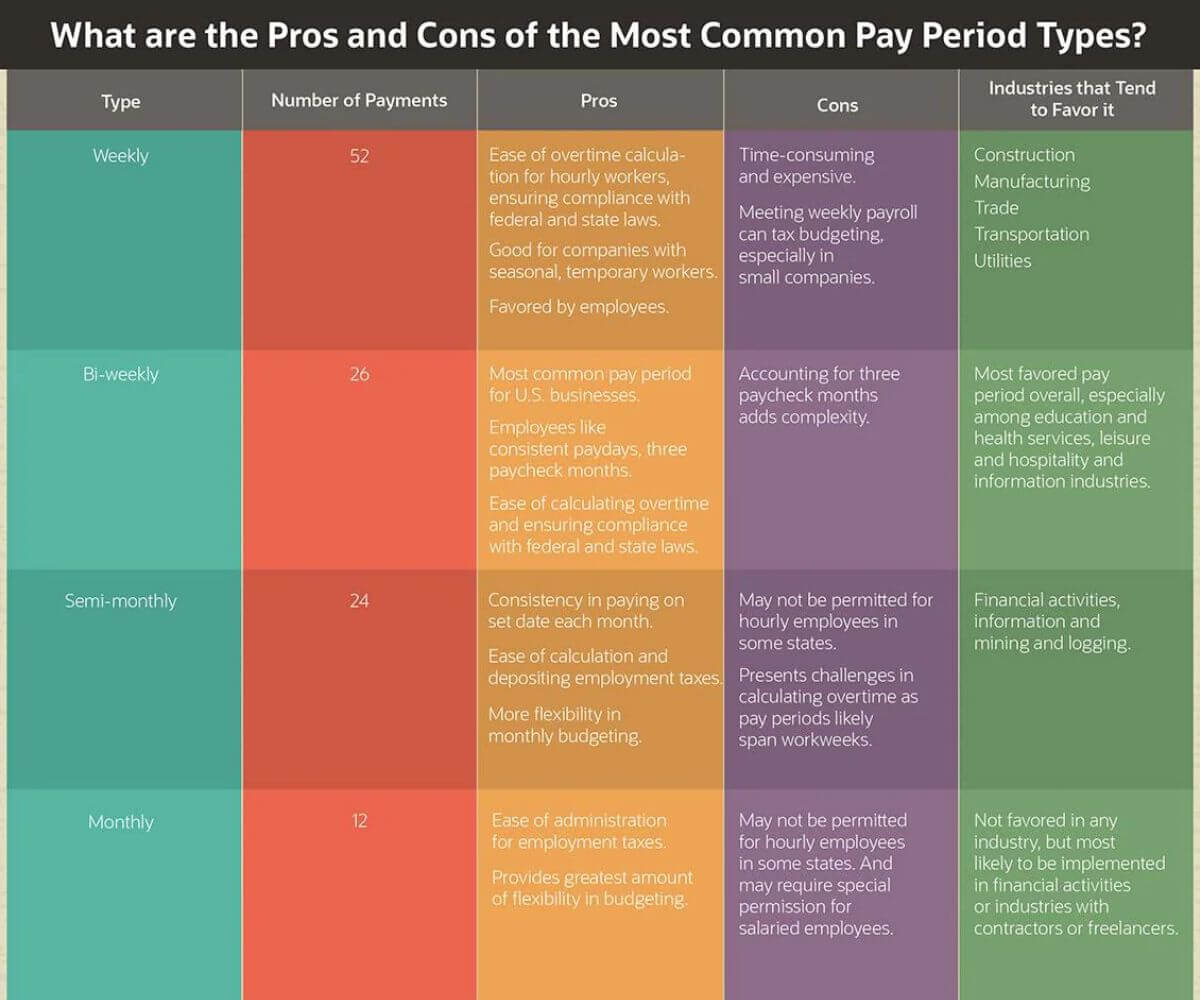How Many Pay Periods Are In A Year
A year has how many pay periods? When was the last pay period? When can you divide a month into three pay periods?
You may have asked somebody the majority of these questions, or they are in your brain if you're a tiny company owner.
There are many aspects of managing a business that need to be clarified. Payroll need not be that way. Your issues regarding pay intervals will be no more after you go through this guide to simplifying payroll periods.
So, stay with us till the very end:
What Is a Pay Period?
The period during which an employee's hours are monitored and compensated for each payment is known as a pay period.
While pay periods can vary in duration, you can repeat them and start the day after the prior one finishes to ensure that all working hours are added to the payment period.
The majority of payroll elements, including payment schedules, the anticipated number of paychecks per year, and the amount deducted from each paycheck for payroll taxes and employment benefits, are also determined by pay periods.
It is crucial to pay your employees according to the established schedule constantly; not only will this help you attract and keep great people. However, it may also help you avoid any legal problems.
How Many Pay Periods Are in a Year?

There isn’t any specific number for every year. The figure keeps changing every year. Nevertheless, there are certain years, like 2021, with 27 biweekly pay periods.
And this is because January 1st fell on a Friday, giving 2021 a total of 53 Fridays. But, of course, this is possible for more days and years, and it notably impacts businesses that issue weekly or biweekly wages on those specific days.
Pay period estimates are complicated. Therefore, based on the size and finances of your business, you could find it helpful to speak with or hire a payroll provider to help with your organization's payments.
4 Most Common Pay Periods
The following are the most common pay cycle types:
-
Weekly
Many industries that rely on physical work, like manufacturing and construction, have a weekly pay period.
Due to the regular pay intervals, which provide improved cash availability, it is especially helpful for recruiting low-wage workers during times of strong demand.
-
Bi-Weekly
When adopting a biweekly pay cycle, businesses pay their staff daily every two weeks. For example, workers may receive their payments every other Wednesday. According to this pay plan, employees typically get 26 biweekly pay periods yearly.
Because it finds a compromise between fair pay periodicity and payroll calendar management costs, this payment plan is the most preferred among medium-sized and big businesses.
Moreover, employees can also calculate monthly income from biweekly paycheck.
-
Monthly
Employers must pay their staff once a month on a specific day under monthly pay periods. Nevertheless, due to the lengthy payout gaps, it is the least common, particularly in mid to low-wage sectors.
-
Semi-Monthly
Workers receive their payment twice every month during a semi-monthly pay period. No matter what day these dates fall on, they are typically set for the first and fifteenth of the month.
The fact that these pay periods do not often correspond with weekdays is a problem with this approach. On the other hand, semi-monthly pay can assist in resolving the issue of additional paychecks brought on by some years' extra paydays.
How Are Pay Periods Determined?

First, think about the financial flow of your business. When does your business have the most monthly money to pay employees?
It makes it more logical to plan payments for periods of strong flow. Ask your finance team which days are optimal for payroll if you need clarification on these hours.
Additionally, consider the size of your organization. A biweekly pay period plan could be ideal for smaller businesses with 100 or fewer employees.
On the other hand, semi-monthly pay periods vs bi-weekly can be preferable for your employees if your business employs 100 or more people.
Changing Payroll Frequency
You must decide how frequently to pay your staff when you have them. How frequently you run payroll and disburse salaries depends on your chosen payroll frequency. Making decisions is a regular part of running a business.
You may occasionally choose poorly for your own business. If your pay frequency doesn't work for business, you might have to switch it up.
Difference Between a Pay Period and a Pay Date
As already discussed, a pay period is when a company pays its employees.
Additionally, a pay period is when laborers get compensation for their work. For financial planning, remember that this would cover any time your staff is working, such as any recruiting or learning time.
Usually, pay periods are famous for their numbers. The day businesses pay their employees for their labor is a "pay date." The most common payday is on Friday.
Years With Extra Pay Periods
There is often a defined number of pay weeks for biweekly or yearly paychecks. Twenty-seven biweekly pay periods fall in between certain years. One such year was 2021.
And this may also occur on other days and years, and it can especially hurt businesses that issue weekly or biweekly payments on those specific days.
The next year, 2027, will have 53 Fridays, and for businesses that pay their staff on Fridays, either weekly or biweekly, this will also be a year with an additional pay period.
How Do You Keep Track of an Employee’s Pay Period?
A common option is to employ a payroll provider, especially if your company is too young to have its own payroll manager.
Businesses like yours may use these payroll systems to manage employee hours, set up automatic payments, and perform other payroll-related tasks while abiding by employee rights.
Some payroll providers also offer HR and accounting experts to deal with hiring new employees, taxes, bonuses, paid time off, and other payroll-related issues.
Moreover, you should calculate labor costs carefully to better keep track of an employee’s pay period.
How to Decide Which Pay Period Is the Best for a Business

Evaluating the kind of workers you have is the first step in selecting the best payment plan for your company.
Think about how many hours your employees put in each week, how much their income fluctuates weekly, and if they are hourly or salaried workers.
You'll also take a peek at their monthly gross revenue.
Check the Department of Labor site to determine your state's payment laws after deciding what is best for your staff. States and pay period types have different laws. For instance, certain states do not permit monthly pay cycles.
Consult your accounting firm or a payroll professional to decide the ideal timetable for your company after looking up the rules in your state.
FAQs
How many pay periods are in a year, twice a month?
With twice-a-month payments, you will go through 24 pay periods in the year.
Does it matter which day of the week I choose?
No, it doesn’t! You can pick any day of the week to be your normal payday, but you must ensure that you carry through with punctual payments on that particular day. Failure to do so may result in FLSA claims, penalties, or fines under state payday laws.
Can I choose any day of the week as a pay period date?
Yes, you can! However, just make sure to work on clear terms and inform your workers and employees if you change the pay period.
How many pay periods are in a weekly year?
Companies that hire hourly workers frequently adopt weekly compensation, which results in 52 pay periods annually.
Do employers have to pay employees for an extra payday in a year?
In years when you have additional pay periods, you don’t have to pay salaried workers more than their yearly income. However, to account for the other payday, some businesses lower compensation across all paychecks for the year.
However, explaining this to staff can be challenging. Other employers only cover the cost of the extra wages.
How many pay periods in 2023
2023 will contain the typical 26 pay periods for individuals you pay biweekly, the same as the previous year.
How many pay periods in a year biweekly 2023
If you're in charge of a typical biweekly pay schedule in 2023, workers will get 26 payments. So in 10 of the 12 months, workers will get two paychecks, and in two of the months, they will get three.
How many pay periods in 10 months
If you pay the employees monthly, they will have ten pay periods in 10 months. But, on the other hand, you will have 20 pay periods for semi-monthly payments in 10 months.
Furthermore, you will have 40 pay periods if you pay weekly and 80 pay periods if you pay bi-weekly.
Kristen Larson is a payroll specialist with over 10 years of experience in the field. She received her Bachelor's degree in Business Administration from the University of Minnesota. Kristen has dedicated her career to helping organizations effectively manage their payroll processes with Real Check Stubs.

